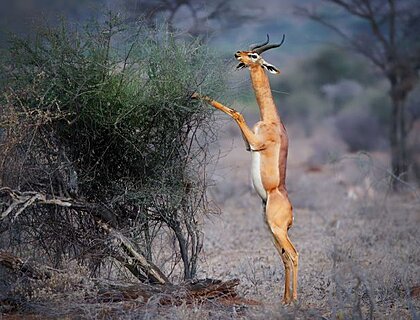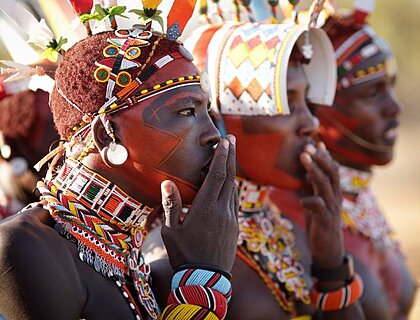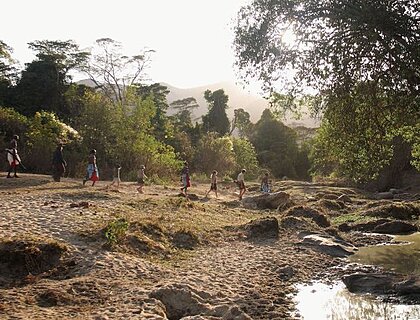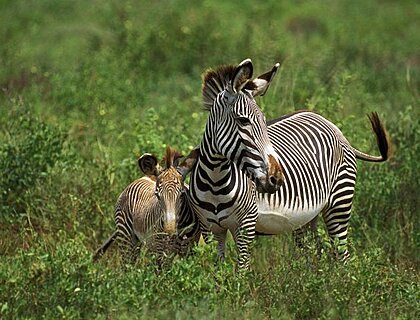Arid, craggy terrain with Doum palms tracing the river lines. Plus rare wildlife such as Grevy’s zebra, Reticulated giraffe & Gerenuk antelope.
Scroll for more

Yet Samburu’s true distinction lies in what you won’t find elsewhere. The “dry country specialists” – reticulated giraffe, Grevy’s zebra, Somali ostrich, Beisa oryx, and the elegant gerenuk – are unique to northern Kenya. For seasoned safari-goers, Samburu National Park offers the thrill of rarity.
If the Masai Mara is Kenya’s stage, then Samburu is its backstage – raw, untamed, and deeply authentic.
Unusual Fact: The Ewaso Ng’iro River originates on the western slopes of Mount Kenya – more than 300km away – before threading its way into the arid north.

For the discerning traveller, there are some luxury Samburu safari lodges such as luxurious Sasaab Camp, with its Moroccan-inspired flair, or Saruni Samburu, perched on a dramatic ridge in its own conservancy, with sweeping views over the Samburu reserve below.
Both deliver privacy, style, and a sense of place that matches the wildness outside.

Here you can spot elephant, buffalo, kudu, waterbuck, and giant forest hog. Leopard, lion, and wild dog are also present but less commonly seen.
Here the charming Kitich Camp specialises in guided walking safaris, among the most rewarding walking safaris in Kenya. This is a rare, immersive way to connect with the wilderness. After days in a vehicle, stepping quietly through forest paths feels both liberating and intimate.
Back to Kenya safari main page.

It’s different in many ways: semi-arid climate, its rare northern species, Samburu culture, wilder landscapes, and far fewer visitors make it feel more remote and exclusive.
Can you combine Samburu with other Kenyan parks?
Yes – Samburu pairs beautifully with Laikipia, or you can continue north into the Matthews Range for walking safaris.
Is Samburu suitable for first-time safari-goers?
Absolutely – but it is especially rewarding for those who have already visited the Mara and want a more unusual, less busy experience.
Talk to us about combining Samburu with Laikipia, or the Matthews Range for a truly distinctive safari.
